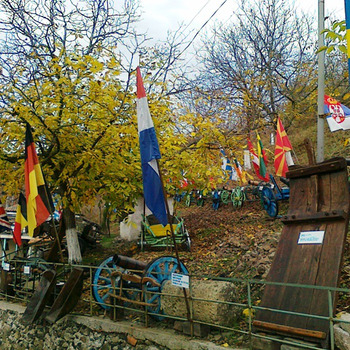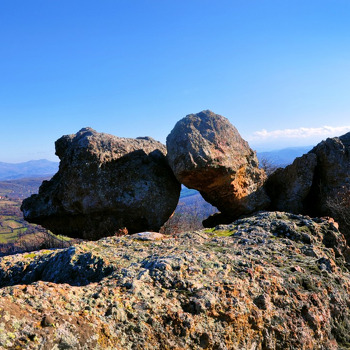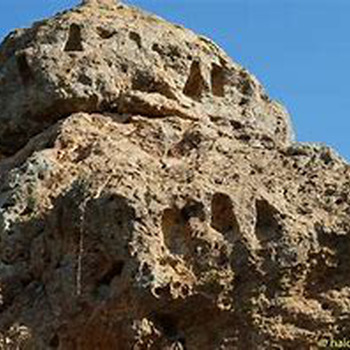Medieval settlement Harman Kaya
Overview
Harman Kaya is one of the largest rock-cut prehistoric cult complexes on the territory of the Eastern Rhodopes, located near the neighborhoods Abitsa and Gusak in the village of Bivolyane, Momchilgrad Municipality. The site is also known by the Bulgarian name Raven Kamak. So far, the site has not been studied using systematic archaeological and geophysical methods. Between 2006 - 2013 the site was explored through field and short archaeological excavations by a team of Assoc. Prof. Stefanka Ivanova. Information about him is given in their publications: Prof. Ana Raduncheva (1990), Maria Nikolchovska; Todorova and Shukerova (1996) Prof. Valeria Fol (2000).
Harman Kaya is located in the Nanovitsa volcanic caldera and includes both natural rock formations and artificially carved rock structures - two womb caves, rectangular and round pools, trapezoidal niches, observation decks and a petroglyph named Chicken, which was destroyed by a treasure trove. in 2017. The southwestern, southern and eastern slopes of the massif are vertical rocks, and its ridge is a flat plateau. The massif is crossed by the Karabedik Dere valley. The rocks that make it up are medium-acid tufts and tufts with a light, reddish hue. In the gorge by the river there are colorful opals, chalcedony and agates.
The prehistoric complex has been partially studied and most authors in the past defined it as ancient Thracian. The site was registered by Prof. Vasil Mikov in 1941. According to him, at the foot of Harman Kaya are the remains of the "largest Thracian city", in which, in addition to the outlines of the premises, the streets and squares are clearly visible. The masonry, according to Mikov, is without mortar, and the pottery he found on the site dates back to the 6th and 1st centuries BC.
Prof. Ana Raduncheva defines it as belonging to the Chalcolithic, and A. Shukerova describes it without committing to the dating of the site. According to the latest field research and partial archaeological research from the period 2006-2013 conducted by an interdisciplinary research team led by Assoc. Prof. Stefanka Ivanova, the results of drilling studies provide convincing evidence that the rock-cut sites belong to the Chalcolithic.
Recommended
- Letovnishki waterfall
- Varbitsa River
- The Big and the Small Cauldron- Golemiat i Malak Kazan
- Thracian fortress in the village of Lisitsite
- Chit kaya
- Church of the Assumption - Kardzhali
- Open-air museum of the Rhodope traditions- Batkovtsi village


 Bulgarian
Bulgarian Romanian
Romanian




